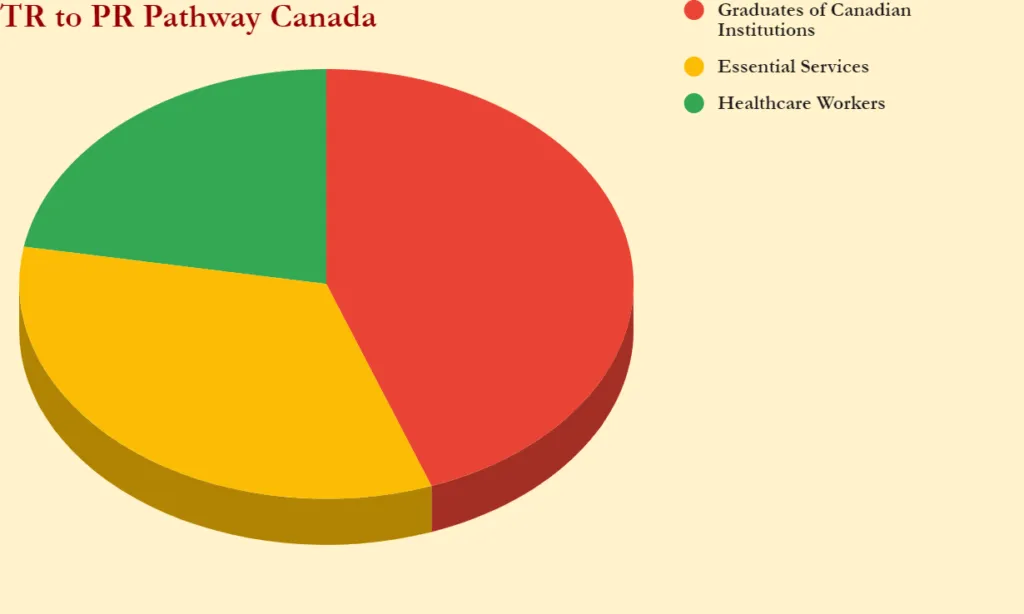TR to PR Pathway - IRCC Update | Eligibility | Processing Time | Essential Documents

Last Updated On : May 31 , 2024
What's New in the blog
TR to PR Pathway was closed by the Canadian government on November 5, 2021.
For reference you can visit : IRCC Page Here
IRCC Update for TR to PR Pathway

Even though the Temporary Resident (TR) to Permanent Resident (PR) program is closed, there are still several options for skilled workers seeking Canadian permanent residency.
These programs prioritise those with in-demand skills and Canadian work experience.
Consider applying for a work permit through programs like the Labour Market Impact Assessment (LMIA) or the International Mobility Program (IMP). Gaining valuable Canadian experience can significantly improve your chances of qualifying for Canada PR later.
Canada Immigration Streams to apply for TR to PR program?
A candidate who is in Canada as a temporary worker in health service or an essential worker or a graduate from the post-secondary institution can apply for Permanent Residency through the TR To PR pathway.
There are six streams, as advocated by IRCC:
- Stream A: Workers in Canada in healthcare
- Stream B: Workers in Canada in essential non-healthcare
- International Graduates
- Stream A: French-speaking workers in Canada in healthcare
- Stream B: French-speaking workers in Canada in essential non-healthcare
- French-speaking International Graduates
TR To PR Eligibility
If the candidate belongs to any of the above-mentioned streams and is residing in Canada is eligible to apply for PR through TR to PR pathway.
The applicant has to submit forms and pay fees for biometric procedures to get a Biometric Instruction Letter. This letter, along with your presence for submission, will hasten the application formalities.
TR To PR Processing Time
Usually, the processing time ranges between 4-5 weeks’ time , although it is uncertain because of the pandemic conditions prevailing all over the world.
IRCC could not process the applications as in the past and hence could not give the tentative timeline for processing the TR to PR applications. Yet, they process the applications once they receive a completed application with all the relevant documents.
TR To PR Document Checklist
The supporting documents checklist required for Temporary Resident to Permanent Resident pathway streams are:
- The applicant has to submit a study permit or work permit as proof of their stay in Canada. Proof has to be shown for their stay during the submission of application, and also when IRCC decides for issuance of PR.
- A reference letter from your current employer with the contact details of your employer. The letter must contain the applicant salary details, employment period, roles and responsibilities, number of hours per week.
- The application for the Permanent Resident pathway solicits Immigration Medical Exams by a panel of physicians. If you have already completed, attach the supporting information sheet.
- A photo of the applicant and the other family members has to be uploaded along with the application.
- The Police Clearance Certificate has to be added for TR to PR Canada Visa when:
- The candidate and the family members are 18 years or above.
- The candidate and the family members must submit proof of stay in the past 10 years for 6 months or more in any country.
